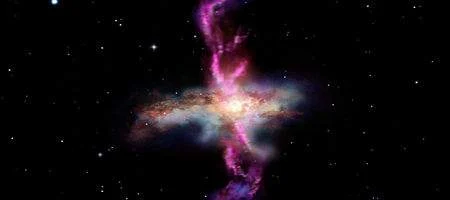Scientists examining data from the Herschel space observatory say they’ve detected gigantic storms of molecular gas in the centre of many galaxies.

Some of these outflows hit speeds of more than 1,000 kilometres per second. The more active galaxies contain stronger winds, which can blow away the entire gas reservoir in a galaxy, inhibiting further star formation and the growth of the central black hole.
The findings, from Herschel’s PACS instrument, give an explanation for the way some early galaxies show much more activity than our Milky Way today – but then see that activity stop abruptly.
Powered by newly-formed stars, shocks from stellar explosions or by the black hole in the galaxy’s centre, the storms would remove all the gas supply from the galaxy, halting the same mechanisms that produced them in the first place.
“Outflows are key features in models of galactic formation and evolution, but prior to our work no decisive evidence of their active role in such processes had been gathered,” says Eckhard Sturm from the Max Planck Institute for Extraterrestrial Physics (MPE).
“By detecting outflows in cold molecular gas from which stars are born, we can finally witness their direct impact on star formation. Star formation stalls as the gas supply is blown out of the centres of the galaxies with a rate of up to a thousand solar masses per year.”
The observations also explain why there seems to be a correlation between the mass of the galaxy’s central black hole and the mass of stars in the galaxy’s inner regions. This would be a natural consequence of the galactic outflows as they remove the common gas reservoir and inhibit both star formation and the growth of the black hole.
“Herschel’s sensitivity enabled us to detect these gigantic galactic storms, and to demonstrate, for the first time, that they may be strong enough to shut down stellar production entirely,” says co-author Albrecht Poglitsch, also from MPE and the principal investigator of PACS.






